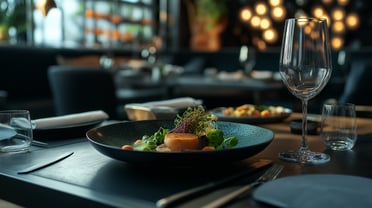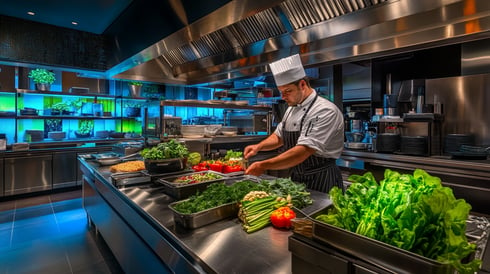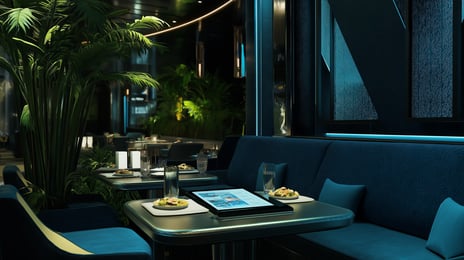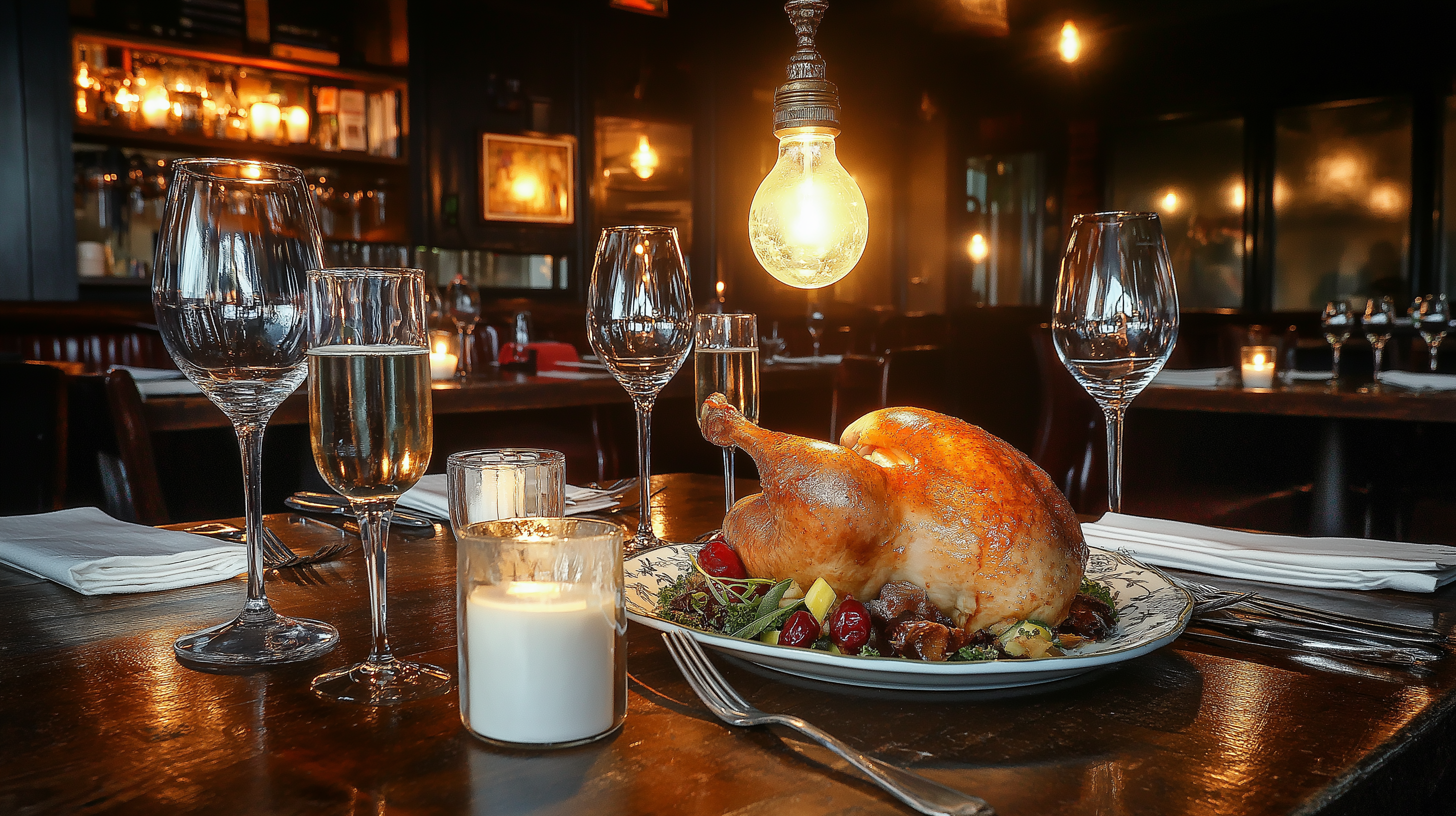
 If you ask the most successful restaurant owners how they generate over 200000 euros in annual profits per restaurant, the answer is almost always menu engineering. Menu engineering is a robust process that allows you to maximize your earnings by strategically designing your menu. As it is one of the most important elements determining a restaurant's success, in this article, you will discover the basic steps of menu engineering and learn how to optimize your restaurant.
If you ask the most successful restaurant owners how they generate over 200000 euros in annual profits per restaurant, the answer is almost always menu engineering. Menu engineering is a robust process that allows you to maximize your earnings by strategically designing your menu. As it is one of the most important elements determining a restaurant's success, in this article, you will discover the basic steps of menu engineering and learn how to optimize your restaurant.
1. Make Menu-Market Fit
This concept refers to aligning your menu with what the local market wants. It's about adding dishes that people in your area are looking for but haven't yet found a favorite restaurant.

Fortunately, you don't need to be a wizard to analyze this situation - you can get the necessary data using Google's Keyword Planner tool.
Using this tool, you can see the search volume for specific dishes in your area. For example, if people search for terms such as "best lahmacun in Kadıköy" or "stone oven pizza in Urla," there is unmet demand for that food in your area.
Adding these high-demand dishes to your menu can make your restaurant stand out in this area and expand your customer base.
Applicable Tip: Create dedicated web pages optimized with local keywords for these popular dishes. This strategy will help you attract new customers and make your restaurant's center of attention for that dish.
2. Determining the Stars: Four Menu Categories
In menu engineering, it is essential to understand the profitability and popularity of each dish. Accordingly, you can divide your menu items into four categories using a simple table:
 Stars: These popular and profitable items should be the focal point of your menu design and marketing efforts.
Stars: These popular and profitable items should be the focal point of your menu design and marketing efforts.- Plow Horses: These popular dishes have a low profit margin. You may want to consider ways to increase profitability, such as changing the recipe or reducing portions.
- Puzzles are profitable but not very popular dishes. To make them more attractive, you can adjust their prices, strengthen their descriptions, or feature them more prominently on the menu.
- Low Profit and Popularity (DUDS): These dishes are unprofitable and unpopular and should usually be removed from the menu. However, if you see potential in them, revising their recipes and trying them again may be worth revising.
Your goal should be to review and improve these categories based on data continuously.
3. Menu Layout: Z-Model
Research shows that people read menus in a Z-shape: They start at the top left corner, move to the top right corner, then diagonally down to the bottom left, and finally look at the bottom right corner. This layout knowledge allows you to place your highly profitable products strategically.
 Tip: Place your star dishes in these prime areas and draw attention to them using visual cues like boxes, bold text, or photos. You can dramatically increase your sales by emphasizing just one item on a page. This is because too much focus distracts from the emphasis and reduces effectiveness. To make "puzzles" more visible, use attractive descriptions or appetizing images to turn them into "stars."
Tip: Place your star dishes in these prime areas and draw attention to them using visual cues like boxes, bold text, or photos. You can dramatically increase your sales by emphasizing just one item on a page. This is because too much focus distracts from the emphasis and reduces effectiveness. To make "puzzles" more visible, use attractive descriptions or appetizing images to turn them into "stars."
4. Prepare Delicious Descriptions
A well-written menu description can make a big difference. Instead of listing the ingredients, write detailed and enticing descriptions to whet the customer's appetite. For example:
 Simple: "Grilled chicken sandwich."
Simple: "Grilled chicken sandwich."- Advanced: "Fresh chicken breast from local farms, grilled to perfection and served on a crispy bun with crunchy greens and fresh tomatoes."
Emphasizing freshness, locality, and craftsmanship in the preparation of the food creates a more appealing and delicious experience in the eyes of the customer.
Such descriptions can increase sales, and research shows that customers better appreciate the taste of dishes promoted in this way. In addition, phrases such as "handmade," "freshly pressed," or "from local farms" can increase the value of the dishes and make customer reactions to higher prices more positive.
5. Continuous Optimization
Menu engineering is not a one-and-done job; it is an ongoing process. It is essential to update your menu regularly, monitor ingredient costs, analyze sales performance, and follow market trends. For example, a "Star" product may become an "Attractive but less profitable" product over time as ingredient prices increase or customer preferences change.
 Doing these analyses quarterly allows you to respond to changes proactively. Are your "stars" still shining? Have your "Puzzles" turned into "Bugs"? With questions like these, you can ensure that your menu always remains profitable and effective.
Doing these analyses quarterly allows you to respond to changes proactively. Are your "stars" still shining? Have your "Puzzles" turned into "Bugs"? With questions like these, you can ensure that your menu always remains profitable and effective.
Also, train your staff strategically. Teach them how to promote high-margin products. For example, when a customer asks for a recommendation, your waiter might suggest something like: "Our grilled salmon is a customer favorite; it's fresh, from local farms, and pairs perfectly with our special homemade sauce."
Bonus: How Many Varieties Should be on the Menu?
A good menu strikes a balance between variety and simplicity:
- Mezes: 6 options offer a variety that will appeal to different palates while not overwhelming the kitchen.
- Drinks: Excluding basic drinks, eight options are sufficient. This provides the ideal balance of high-margin beverages.
- Main Dishes: 8 varieties, ensuring both quality and simplifying kitchen operations.
- Desserts: 4 options ensure impressive quality and reduce material waste and customer decision fatigue.
By limiting menu variety, you can reduce costs, improve the customer experience, and create a fast and satisfying decision-making process.
Conclusion: The Power of Data-Driven Menu Engineering

The bottom line is that successful menu engineering is about making data-driven decisions. Instead of guessing, use accurate data to determine which items to highlight, rearrange, or remove. By constantly experimenting with menu layout, pricing strategies, or new dishes, you can stay ahead of trends and maximize your profitability.
Central Idea: Menu engineering is a dynamic and ongoing strategy. By constantly monitoring performance, refining your menu, and training your staff, you can keep your restaurant one step ahead of your competitors and always meet your customers' needs.
By implementing these strategies, you can transform your menu from a list of dishes into a powerful tool for increasing your profits.

How to Optimize Your Restaurant Delivery Operations with Paketix
Introduction In today’s fast-paced world, efficient delivery operations are essential for restaurants to meet customer expectations and stay...


